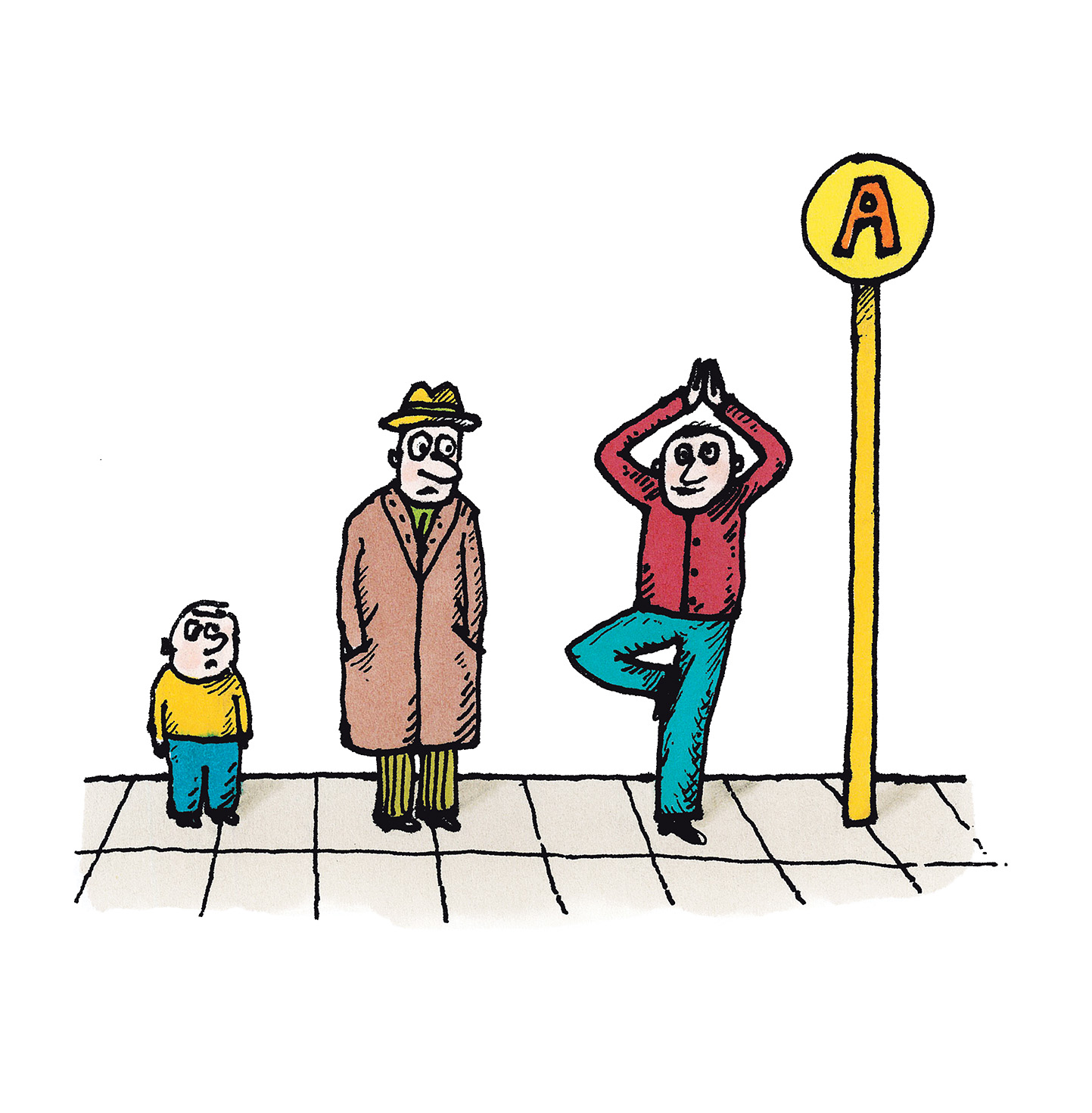
Wider vision
-
Sit down and focus your attention on your breathing. Don’t change it, let it flow naturally.
-
Turn your attention to how each inhalation and exhalation is present in your body. Allow a few minutes to observe it.
-
When you feel that you are closer to yourself, look straight ahead and then focus on the objects situated beyond the centre of your field of view. This way of looking is called peripheral vision. Try to see as much space as possible, as long as it doesn’t become too strenuous.
-
Observe what is changing. You can move your head and walk across the room while continuing to look in this way. Sense what it is like to have wider vision and remember this sensation. You can take notes about the experience.
-
Now remind yourself of a stressful situation that you recently encountered, and imagine that you are experiencing the situation using peripheral vision. Think what would change. How would it influence your attention, your perception of space, and your reactions?
33 breaths
-
Sit down comfortably or lie down. Focus your attention on your body and on what is happening with it now. Maybe something is aching, maybe you’re sensing some tension, itching or tingling. Maybe you are sensing the weight of your body or hearing the beating of your heart. Whatever you are sensing, do not judge it and do not try to change it. Allow yourself to feel everything you are feeling in that moment.
-
Now focus your attention on your spine. Usually we are more in touch with our muscles than our bones, so try to concentrate.
-
Your spine consists of 33 vertebrae (sometimes 34). Starting from your tail bone, take one breath per vertebra. Imagine that every time you inhale and exhale, your breath flows through each vertebra. You can count your breaths to 33, each inhalation and exhalation as one.
-
If you feel like it and have more time, you can take several breaths with each vertebra.
-
Right after the first exercise, pay attention to how it affects your body and mind. You can repeat this exercise if you want, especially if you have spine issues.
Safely
-
Imagine that you are in a garden. It can be any garden: small, in a village, English, on a balcony – the one you feel best being in.
-
Now sit down, lie down, or take on a position in which you would be in your beloved garden. If you are not a nature lover, choose a place where you feel comfortable.
-
Close your eyes and take a look around your imagination. What can you see? What smells can you sense around you? What are you experiencing? Is the wind blowing or the sun shining? Notice as many details as possible and let yourself stay in this space for a moment.
-
Now think that you are safe there. What does safety mean for you? What does it mean for your body and your emotions? Allow yourself to feel that nothing poses a threat to you in that space.
-
Then, while keeping a sense of safety in your mind, imagine that you take this place with you everywhere you go: to work, on a walk, to the bus, or to a meeting with a client.
-
Observe what this exercise gives you and how it changes your relationships with other people.
And in those moments where the sun is setting and the house is quiet and you are weary from the day, may you know that there is grace for you in that space, and no amount of heaviness or loneliness can take that away. And because of that grace, you are free to slow down. You are free to breathe and rest, no matter the things not sorted out. There might be some mystery here and there might be longing, wondering, and waiting. But there will also be boundless peace that goes beyond any understanding, running wild like a river through everything, no matter how heavy these moments feel. So rest easy, when everything is approaching. Tomorrow is surely coming, but in the hours in between, you are free to rest till then. Morgan Harper Nichols
Translated from the Polish by Agata Masłowska







